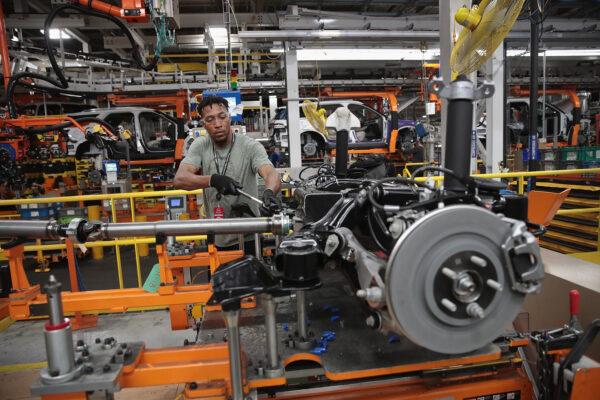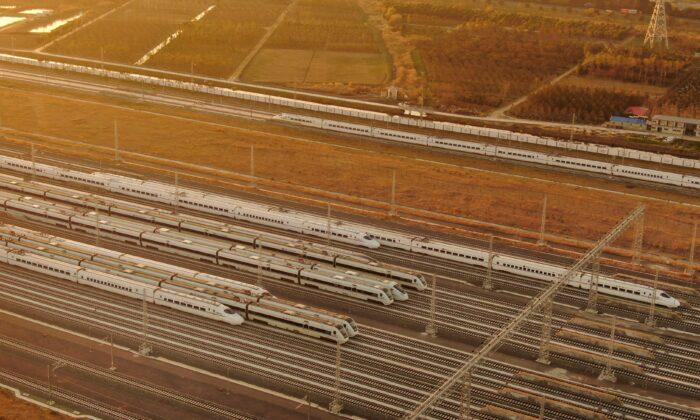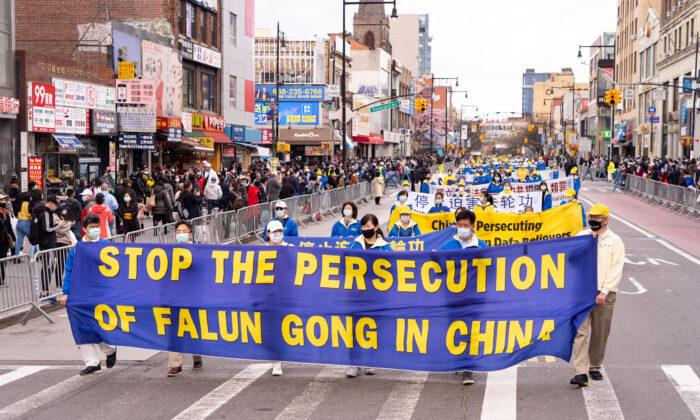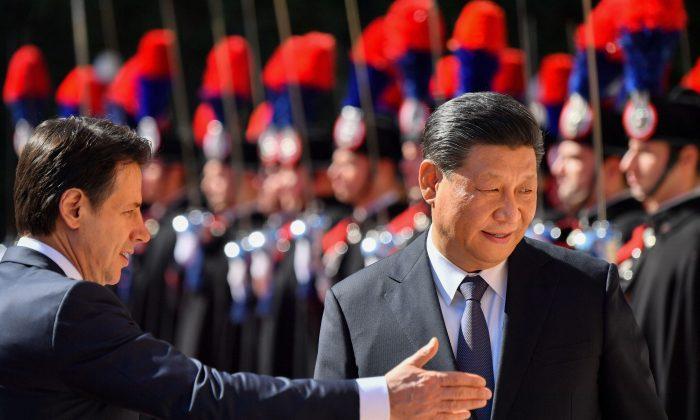At that time, China’s technology lagged behind the United States’. It was unthinkable then that China would one day become a tech competitor. After three decades of open trade, the United States is waking up to a world in which China seems to be within arm’s length of replacing it as the world’s top tech provider.
China’s Theft Tactics
From the very beginning, the U.S.-China trade relationship was plagued by IP theft. From counterfeit purses and piracy VCDs in the early days, to computer software later on, China has never stopped stealing. But China’s ambition has moved beyond copycatting consumer products. In Chinese leader Xi Jinping’s “China Dream,” a critical component is to achieve world dominance in cutting-edge technology such as biotech, artificial intelligence (AI), and 5G, and to do it at lightning speed. As the Chinese regime’s propaganda often boasts, the technological progress that took the West a couple of hundred years was completed in China in just a couple of decades.Extraordinary speed requires an extraordinary approach. To achieve Xi’s growth goal, the Chinese regime has developed a variety of tactics to access the crown jewels of U.S. technology. Some of these tactics are nefarious or illegal, but some are actually legal, or fall in less regulated gray areas. They could be operated in the United States, in China, or virtually.
Of course, physical and cyber espionage by China has been a classic method that many are well aware of. It has grown only more rampant today: about 80 percent of all federal economic espionage prosecutions in recent years were allegedly related to benefiting the Chinese regime, and about 60 percent of all trade secret theft cases have had a nexus to China.
But the damage of espionage is nothing compared to the legal tactics. U.S. companies that try to enter China often find themselves being forced to hand over the complete know-how.

In Chinese Territory
According to a 2019 report by U.S.-China Economic and Security Review Commission (pdf): “In many industries, foreign firms must enter into joint ventures to invest or operate in China. Joint ventures (JVs) are often the source of Chinese companies’ most technologically advanced and innovative procedures and products, acquired through technology transfer from their foreign JV partner.”The Chinese JV partners often share the technologies acquired from U.S. firms with other Chinese companies in the industry. So such tech transfers benefit all Chinese companies in that industry.
High-Speed Railway
In 2004 (pdf), China solicited bids from foreign companies to build 200 high-speed train sets. The $2.4 billion order was only the beginning of China’s long-term plan. The terms were designed to force global market leaders to transfer technology to China. Foreign companies were not allowed to bid unless they went into a joint venture with a Chinese firm. Only two Chinese companies were allowed to work with foreign companies. The foreign company awarded with the bid was required to first complete tech transfer to its Chinese partner, and it would receive payment only after the Chinese partner passes the “tech transfer execution evaluation.” The end products would need to be China-branded.In the U.S. Territory
It’s bad enough that China steals technology within its own borders. But in recent years, China has pushed the frontline deep into the U.S. territory through acquiring investments in U.S. companies. According to Public Citizen’s Chinese Corporate Investment Database, “Chinese financial interests have acquired more than $120 billion of assets in the U.S. economy since 2002. Fifteen Chinese government entities (sovereign wealth funds and state-owned enterprises) and government-connected private sectors firms account for nearly 60 percent of this activity.”American Talent
American talent is another target of the Chinese regime.There are numerous other projects in China at the central and local government levels. It is impossible to know how many U.S. talents have been acquired through these programs.
The short-term gains can be blinding, such as a billion-dollar contract or a large sum of research funds. But it is important for Americans to understand that the Chinese regime launched an undeclared war against the United States decades ago.
With the help of U.S. technologies, the Chinese Communist Party has gained more power than ever, and is getting more aggressive each year. Xi Jinping’s “China Dream” is not about freedom, humanity, and peace—it’s a dictator’s dream to rule the world.
It is time for Americans to take action.






Friends Read Free